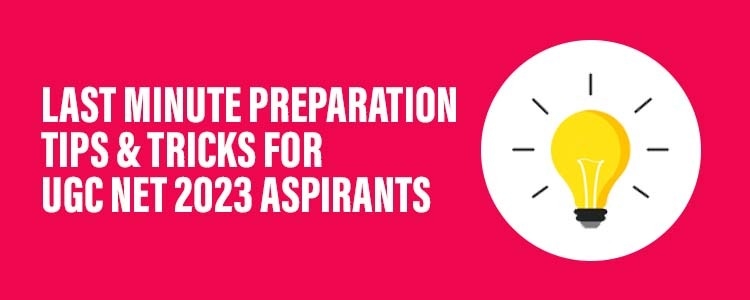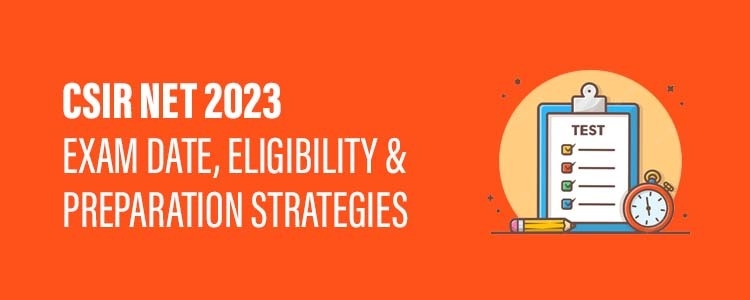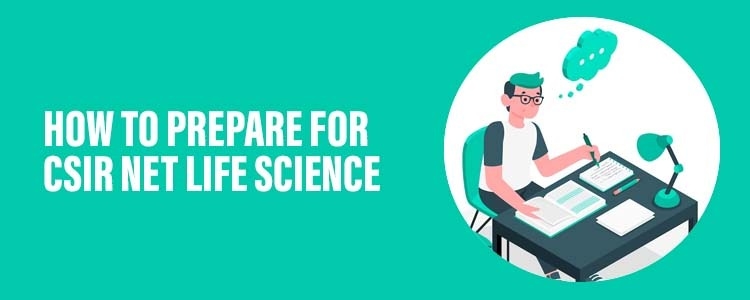UGC NET Commerce Coaching: Online classes, Syllabus and Previous Year questions

Table of Contents
UGC NET Commerce Online Coaching
UGC NET Commerce Syllabus
UGC NET Commerce Previous Questions
Overview
Clearing UGC NET is a life changing event for millions. And millions are participating each of its editions in June and December in the hope of cracking one of the toughest examinations in the country. In order to clear the UGC NET Commerce in your next chance, you will need a perfect strategy for preparation and the best knowledge about the detailed syllabus. Take a look at the best online method to learn, the detailed syllabus and previous year questions in this article. Join the leading UGC NET Coaching platform in Kerala to make your dream come true.
UGC NET Commerce Online Coaching
UGC NET is one of the most important and crucial exams for candidates who are aiming for research fellowship and / or assistant professor career. The National Eligibility Test conducted by NTA under the purview of University Grands Commission is one of the exams with least pass percentage. With high cut-off mark, standard of questions and vastness of syllabus, cracking UGC NET Commerce is often a difficult task for majority of students. Many of the students who have recently completed post-graduation or attempting the exam years after might find it challenging to prepare alone. Many candidates might have been working part-time or full time will find the timings of offline coaching centres a challenge. In this case the best resort for candidates is the reliable online coaching classes such as Competitive Cracker. With the best instruments of instruction in a solid online platform Competitive Cracker has the leading result for NET exams in Kerala. The excellent faculty line-up for UGC NET Commerce assures the candidates top notch sessions in live and recorded formats. The insightful analysis of UGC NET previous year questions in Competitive Cracker alone can be help the candidates to crack one of the toughest certifying exams in the country.
In this year-long preparation for UGC NET each candidate will be assisted by a mentor, who is continuously inspiring and motivating them throughout the course period. You can ask your doubts through our app and get it cleared with perfect explanation. The group activities we initiate through the official groups in WhatsApp and Telegram can be proved to be the best exercises to keep your preparation lively and active. For this the mentors and faculties initiate brain refreshing quiz, polls and mock tests.
UGC NET Commerce Syllabus
Unit 1: Business Environment and International Business
- Concepts and elements of business environment: Economic environment- Economic systems, Economic policies (Monetary and fiscal policies); Political environment Role of government in business; Legal environment- Consumer Protection Act, FEMA; Socio-cultural factors and their influence on business; Corporate Social Responsibility (CSR)
- Scope and importance of international business; Globalization and its drivers; Modes of entry into international business
- Theories of international trade; Government intervention in international trade; Tariff and non-tariff barriers; India’s foreign trade policy Foreign direct investment (FDI) and Foreign portfolio investment (FPI); Types of FDI, Costs and benefits of FDI to home and host countries; Trends in FDI; India’s FDI policy
- Balance of payments (BOP): Importance and components of BOP
- Regional Economic Integration: Levels of Regional Economic Integration; Trade creation and diversion effects; Regional Trade Agreements: European Union (EU), ASEAN, SAARC, NAFTA
- International Economic institutions: IMF, World Bank, UNCTAD
- World Trade Organisation (WTO): Functions and objectives of WTO; Agriculture Agreement; GATS; TRIPS; TRIMS
Unit 2: Accounting and Auditing
- Basic accounting principles; concepts and postulates
- Partnership Accounts: Admission, Retirement, Death, Dissolution and Insolvency of partnership firms
- Corporate Accounting: Issue, forfeiture and reissue of shares; Liquidation of companies; Acquisition, merger, amalgamation and reconstruction of companies
- Holding company accounts
- Cost and Management Accounting: Marginal costing and Break-even analysis; Standard costing; Budgetary control; Process costing; Activity Based Costing (ABC); Costing for decision-making; Life cycle costing, Target costing, Kaizen costing and JIT
- Financial Statements Analysis: Ratio analysis; Funds flow Analysis; Cash flow analysis
- Human Resources Accounting; Inflation Accounting; Environmental Accounting
- Indian Accounting Standards and IFRS
- Auditing: Independent financial audit; Vouching; Verification ad valuation of assets and liabilities; Audit of financial statements and audit report; Cost audit
- Recent Trends in Auditing: Management audit; Energy audit; Environment audit; Systems audit; Safety audit
Unit 3: Business Economics
- Meaning and scope of business economics
- Objectives of business firms
- Demand analysis: Law of demand; Elasticity of demand and its measurement; Relationship between AR and MR
- Consumer behavior: Utility analysis; Indifference curve analysis
- Law of Variable Proportions: Law of Returns to Scale Theory of cost: Short-run and long-run cost curves
- Price determination under different market forms: Perfect competition; Monopolistic competition; Oligopoly- Price leadership model; Monopoly; Price discrimination
- Pricing strategies: Price skimming; Price penetration; Peak load pricing
Unit 4: Business Finance
- Scope and sources of finance; Lease financing
- Cost of capital and time value of money
- Capital structure
- Capital budgeting decisions: Conventional and scientific techniques of capital budgeting analysis
- Working capital management; Dividend decision: Theories and policies
- Risk and return analysis; Asset securitization
- International monetary system
- Foreign exchange market; Exchange rate risk and hedging techniques
- International financial markets and instruments: Euro currency; GDRs; ADRs
- International arbitrage; Multinational capital budgeting
Unit 5: Business Statistics and Research Methods
- Measures of central tendency
- Measures of dispersion
- Measures of skewness
- Correlation and regression of two variables
- Probability: Approaches to probability; Bayes’ theorem
- Probability distributions: Binomial, poisson and normal distributions
- Research: Concept and types; Research designs
- Data: Collection and classification of data
- Sampling and estimation: Concepts; Methods of sampling - probability and nonprobability methods; Sampling distribution; Central limit theorem; Standard error; Statistical estimation
- Hypothesis testing: z-test; t-test; ANOVA; Chi–square test; Mann-Whitney test (Utest); Kruskal-Wallis test (H-test); Rank correlation test
- Report writing
Unit 6: Business Management and Human Resource Management
- Principles and functions of management Organization structure: Formal and informal organizations; Span of control
- Responsibility and authority: Delegation of authority and decentralization
- Motivation and leadership: Concept and theories
- Corporate governance and business ethics
- Human resource management: Concept, role and functions of HRM; Human resource planning; Recruitment and selection; Training and development; Succession planning
- Compensation management: Job evaluation; Incentives and fringe benefits
- Performance appraisal including 360-degree performance appraisal
- Collective bargaining and workers’ participation in management
- Personality: Perception; Attitudes; Emotions; Group dynamics; Power and politics; Conflict and negotiation; Stress management
- Organizational Culture: Organizational development and organizational change
Unit 7: Banking and Financial Institutions
- Overview of Indian financial system
- Types of banks: Commercial banks; Regional Rural Banks (RRBs); Foreign banks; Cooperative banks
- Reserve Bank of India: Functions; Role and monetary policy management
- Banking sector reforms in India: Basel norms; Risk management; NPA management
- Financial markets: Money market; Capital market; Government securities market
- Financial Institutions: Development Finance Institutions (DFIs); Non-Banking Financial Companies (NBFCs); Mutual Funds; Pension Funds
- Financial Regulators in India
- Financial sector reforms including financial inclusion
- Digitisation of banking and other financial services: Internet banking; mobile banking; Digital payments systems
- Insurance: Types of insurance- Life and Non-life insurance; Risk classification and management; Factors limiting the insurability of risk; Re-insurance; Regulatory framework of insurance- IRDA and its role
Unit 8: Marketing Management
- Marketing: Concept and approaches; Marketing channels; Marketing mix; Strategic marketing planning; Market segmentation, targeting and positioning
- Product decisions: Concept; Product line; Product mix decisions; Product life cycle; New product development
- Pricing decisions: Factors affecting price determination; Pricing policies and Strategies Promotion decisions: Role of promotion in marketing; Promotion methods - Advertising; Personal selling; Publicity; Sales promotion tools and techniques; Promotion mix
- Distribution decisions: Channels of distribution; Channel management
- Consumer Behaviour; Consumer buying process; factors influencing consumer buying decisions
- Service marketing
- Trends in marketing: Social marketing; Online marketing; Green marketing; Direct marketing; Rural marketing; CRM
- Logistics management
Unit 9: Legal Aspects of Business
- Indian Contract Act, 1872: Elements of a valid contract; Capacity of parties; Free consent; Discharge of a contract; Breach of contract and remedies against breach; Quasi contracts;
- Special contracts: Contracts of indemnity and guarantee; contracts of bailment and pledge; Contracts of agency
- Sale of Goods Act, 1930: Sale and agreement to sell; Doctrine of Caveat Emptor; Rights of unpaid seller and rights of buyer
- Negotiable Instruments Act, 1881: Types of negotiable instruments; Negotiation and assignment; Dishonour and discharge of negotiable instruments
- The Companies Act, 2013: Nature and kinds of companies; Company formation; Management, meetings and winding up of a joint stock company
- Limited Liability Partnership: Structure and procedure of formation of LLP in India
- The Competition Act, 2002: Objectives and main provisions
- The Information Technology Act, 2000: Objectives and main provisions; Cyber crimes and penalties
- The RTI Act, 2005: Objectives and main provisions
- Intellectual Property Rights (IPRs) : Patents, trademarks and copyrights; Emerging issues in intellectual property
- Goods and Services Tax (GST): Objectives and main provisions; Benefits of GST; Implementation mechanism; Working of dual GST
Unit 10: Income-tax and Corporate Tax Planning
- Income-tax: Basic concepts; Residential status and tax incidence; Exempted incomes; Agricultural income; Computation of taxable income under various heads; Deductions from Gross total income; Assessment of Individuals; Clubbing of incomes
- International Taxation: Double taxation and its avoidance mechanism; Transfer Pricing Corporate Tax Planning: Concepts and significance of corporate tax planning; Tax avoidance versus tax evasion; Techniques of corporate tax planning; Tax considerations in specific business situations: Make or buy decisions; Own or lease an asset; Retain; Renewal or replacement of asset; Shut down or continue operations
- Deduction and collection of tax at source; Advance payment of tax; E-filing of income-tax returns
UGC NET Commerce Previous Questions
- The Directorate General of Foreign Trade (DGFT) facilitates and promotes foreign trade in India and also implements the foreign trade policy of India. Which of the following union ministry governs the DGFT??
- Ministry of Commerce and Industry
- Ministry of Science and Technology
- Ministry of Finance
- Ministry of External Affairs
- A and B are equal partners, when partnership is dissolved, their capital are Rs. 40,000 and Rs.50,000 respectively. After all assets are sold and liabilities paid, there is a cash balance of Rs. 80,000. What is the amount of profit or loss on realization?
- 10,000 (Profit)
- 20,000 (Profit)
- 30,000 (Profit)
- 10,000 (Loss)
- Which of the following form of market organization is the most prevalent in the manufacturing sector?
- Perfect Competition
- Monopolistic Competition
- Oligopoly
- Duopoly
- In case of two variables, the estimated regression equation is Ẏ = 60 + 5x. the total sum of squares is 15730 and sum of square due to error is 1530. The estimated regression line based on this information is a _______
- Poorest fit
- Moderate fit
- Good fit
- Best fit
- A point estimator is said to be consistent when ______
- It has smaller standard error
- Its expected value is equal to the population parameter
- It tend to become closer to the population parameter as the sample size become larger.
- It is based on all available information
- Which one of the following values is not a part of OCTAPACE framework?
- Openness
- Extension
- Proactivity
- Autonomy
- Mutual Funds in India are regulated by:
- Unit Trust of India
- Department for Promotion of Industries and Internal trade
- The Securities and Exchange Board of India
- Department of financial Services
- An attacking strategy which involves introducing new products or technologies that rewrite the rules of competition in the market and avoid direct conflict with a rival is known as _____
- Flanking
- Bypass
- Encirclement
- Guerrilla
- When the income of a minor child is clubbed with income of mother or father, how much the deduction will be allowed to mother or father?
- Rs. 1500
- Rs. 2000
- Actual income clubbed with the income of mother or father, whichever is less
- No deduction
- Which of the following cause demand of a product to increase?
- An increase in consumer’s income
- An increase in the prices of substitutes
- An increase in the price of complements
- An increase in the number of substitutes
- An increased taste for the commodity
Choose the correct answer from the options given below
-
- I, II, and III only
- III, IV and V only
- II, IV and V only
- I, II and V only
|
Answer Key | |
|
Q. No. |
Ans. Code |
|
1 |
a |
|
2 |
d |
|
3 |
c |
|
4 |
c |
|
5 |
c |
|
6 |
b |
|
7 |
c |
|
8 |
b |
|
9 |
a |
|
10 |
d |
Get the complete question and answer key analysis of UGC NET Commerce and insightful explanations at Competitive Cracker.
Its time for Freedom offer
സ്വാതന്ത്ര്യദിന സമ്മാനം! നിങ്ങളുടെ സ്വപ്ന ജോലിക്ക് അടുത്തെത്താൻ ഇതാ ഒരു അവസരം!
CC August 14 മുതൽ സ്വാതന്ത്ര്യദിനാഘോഷത്തിലാണ് ! ഈ സന്തോഷകരമായ അവസരത്തിൽ, സ്വപ്ന ജോലി നേടാനുള്ള നിങ്ങളുടെ യാത്രയിലും ഞങ്ങളുണ്ട്.
ഓഫർ ആർക്കെല്ലാം?
ഒരു ജോലി നിങ്ങളെ സ്വതന്ത്രരാക്കാൻ സഹായിക്കുമെങ്കിൽ നിങ്ങളുടെ ഒപ്പം നിൽക്കാനാണ് Competitive Cracker ആഗ്രഹിക്കുന്നത്. HSA, HSST, HCA, ICDS SUPERVISOR, LPSA NCA, JLT HINDI & ARABIC, KTET, CTET തുടങ്ങി എല്ലാ കോഴ്സുകളും ഓഗസ്റ്റ് 14, 15, 16, 17 തീയതികളിൽ ഓഫറോടെ പഠിച്ചുതുടങ്ങാം.
പരീക്ഷ പ്രഖ്യാപിച്ചതും വിജ്ഞാപനം കാത്തിരിക്കുന്നതുമായ വിവിധ പരീക്ഷകൾക്ക് തയ്യാറെടുക്കുന്നവരാകും നിങ്ങൾ. നിങ്ങളാവശ്യപ്പെടുന്ന കോഴ്സിന് 20 ശതമാനം വരെ ഫീസിളവ് ഈ ദിവസങ്ങളിൽ നൽകുന്നു. സ്റ്റഡി നോട്ടുകൾ, മോക്ക് ടെസ്റ്റ്, മെന്ററുടെ നേരിട്ടുള്ള പിന്തുണ/വ്യക്തിഗത കൗൺസലിംഗ് എന്നിവയെല്ലാം ഞങ്ങളുടെ എല്ലാ കോഴ്സുകളുടേയും പ്രത്യേകതകളാണ്.
ഇനിയും വിശദമായി അറിയണോ....മടിക്കാതെ ഇപ്പോൾ തന്നെ ഞങ്ങളെ വിളിക്കൂ....*8589083568
Trending Updates









